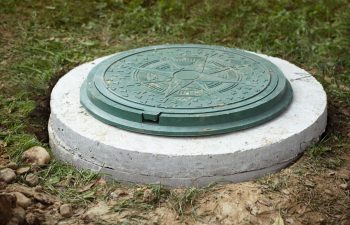
A well-maintained septic system is essential for the smooth running of your home or business. However, even with regular care, septic tanks can fill up over time, leading to potential problems that require immediate attention. Recognizing the signs of a full septic tank can help you avoid costly repairs or backups. At Metro Septic in Cartersville, we’re here to help you identify the warning signals and provide professional solutions to keep your system functioning properly.
Why Does a Septic Tank Fill Up?
Septic tanks naturally accumulate solid waste over time. As wastewater enters the tank, solids settle to the bottom, while lighter substances like grease and oil form a layer at the top. Bacteria in the tank break down some solids, but the rest build up gradually. Without regular pumping, this buildup can cause the tank to overflow or fail, leading to unpleasant consequences.
When Your Septic Tank Needs Pumping.
Here are some telltale signs that your septic tank is too full and needs a professional reset:
1. Slow Draining Sinks and Toilets
If your sinks, showers, or toilets are draining slower than usual, it could be a sign of a full septic tank. When the tank reaches capacity, wastewater struggles to flow freely through the system.
2. Foul Odors Around Your Property
A full septic tank often emits unpleasant smells. If you notice strong sewage odors near your tank, drains, or yard, it’s a clear indication that the tank needs attention.
3. Sewage Backups
One of the most alarming signs of an overfilled septic tank is sewage backing up into your toilets, sinks, or showers. This is not only unsanitary but can also damage your home’s plumbing and interior.
4. Pooling Water in the Yard
If you notice puddles or wet spots in your yard, especially around the drain field, it could mean your septic tank is overflowing and releasing untreated wastewater.
5. Lush, Green Grass Over the Drain Field
While a green lawn is typically a good sign, overly lush or fast-growing grass near the septic tank or drain field can indicate a leak or overflow.
6. Gurgling Sounds in Your Plumbing
Unusual noises coming from your pipes or drains often signal a blockage caused by a full tank.
How Often Should You Pump Your Septic Tank?
The Environmental Protection Agency (EPA) recommends having your septic tank pumped every 3-5 years, depending on household size and water usage. Larger families or homes with heavy water usage may require more frequent pumping. Regular maintenance can prevent your tank from becoming overfilled and save you from expensive repairs down the line.
Why Choose Metro Septic in Cartersville?
At Metro Septic, we’re dedicated to keeping your septic system in top shape. Serving Cartersville and the surrounding areas, our team offers expert inspections, pumping, and maintenance to ensure your system runs smoothly. With years of experience and a commitment to customer satisfaction, we’re your trusted partner for all septic services.
Don’t Wait—Take Action Today
If you’ve noticed any of these signs, it’s time to act. Ignoring a full septic tank can lead to severe issues, including environmental contamination and costly repairs. Contact Metro Septic in Cartersville today to schedule a septic tank inspection or pumping. Protect your property and enjoy peace of mind knowing your septic system is in good hands.
Let us help you keep your system running efficiently!

